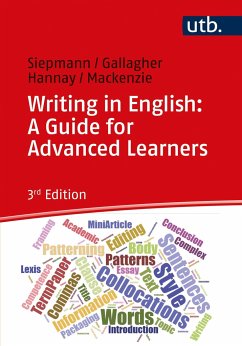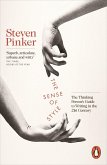This book offers practical advice and guidance to German-speaking undergraduates and academics who aspire to write in English. It also provides valuable assistance to editors, examiners and teachers who conduct English courses for intermediate or advanced students. It consists of four modules and is rounded off with a subject index and a glossary. Making extensive use of authentic texts, the authors adopt a contrastive approach and focus on the major problems encountered by Germans writing in English.This third edition has been thoroughly revised, updated and expanded to include, among other things, advice on how to use new Internet technology.
Aus: Exposé - Zeitschrift für wissenschaftliches Schreiben und Publizieren - Simone Christina Jerke - Exposé 1-2023
[...] Ganz im Gegenteil legen die Autoren Wert darauf, den Lesenden das notwendige grammatikalische Rüstzeug mitzugeben, um durch Fleiß und Training ein belastbares und profundes Verständnis von Textaufbau und -wirkung zu entwickeln. Wer sich die Zeit nimmt, den laden die Autoren dazu ein, sich im Fachbuch zu vergraben, zu schmökern und abzutauchen in die spannende Welt englischsprachlicher Schreibfertigkeit [...]
Aus: media-mania.de, Markus Goedecke, 30.10.2009
[...] Writing in English: A Guide for Advanced Learners" ist ein hochinteressanter und sehr aufschlussreicher Leitfaden zur Verbesserung der eigenen Fähigkeiten im Schreiben von englischen Texten. Zielpublikum ist an erster Stelle ganz klar der akademische Zweig. So eignet sich das Buch sehr gut zur Verwendung in Schreibseminaren, aber auch als umfangreicheres Referenzwerk im Bücherregal von Studenten. Auch für Englischlehrer in der Oberstufe des Gymnasiums sowie für Menschen in der freien Wirtschaft, die viel mit englischen Texten zu tun haben, bietet "Writing in English" einige interessante Aspekte. Der Preis von 22,90 Euro ist im Vergleich mit anderen wissenschaftlichen Veröffentlichungen eher moderat und somit durchaus vertretbar. [..]
» Zum Volltext der Rezension
[...] Ganz im Gegenteil legen die Autoren Wert darauf, den Lesenden das notwendige grammatikalische Rüstzeug mitzugeben, um durch Fleiß und Training ein belastbares und profundes Verständnis von Textaufbau und -wirkung zu entwickeln. Wer sich die Zeit nimmt, den laden die Autoren dazu ein, sich im Fachbuch zu vergraben, zu schmökern und abzutauchen in die spannende Welt englischsprachlicher Schreibfertigkeit [...]
Aus: media-mania.de, Markus Goedecke, 30.10.2009
[...] Writing in English: A Guide for Advanced Learners" ist ein hochinteressanter und sehr aufschlussreicher Leitfaden zur Verbesserung der eigenen Fähigkeiten im Schreiben von englischen Texten. Zielpublikum ist an erster Stelle ganz klar der akademische Zweig. So eignet sich das Buch sehr gut zur Verwendung in Schreibseminaren, aber auch als umfangreicheres Referenzwerk im Bücherregal von Studenten. Auch für Englischlehrer in der Oberstufe des Gymnasiums sowie für Menschen in der freien Wirtschaft, die viel mit englischen Texten zu tun haben, bietet "Writing in English" einige interessante Aspekte. Der Preis von 22,90 Euro ist im Vergleich mit anderen wissenschaftlichen Veröffentlichungen eher moderat und somit durchaus vertretbar. [..]
» Zum Volltext der Rezension








